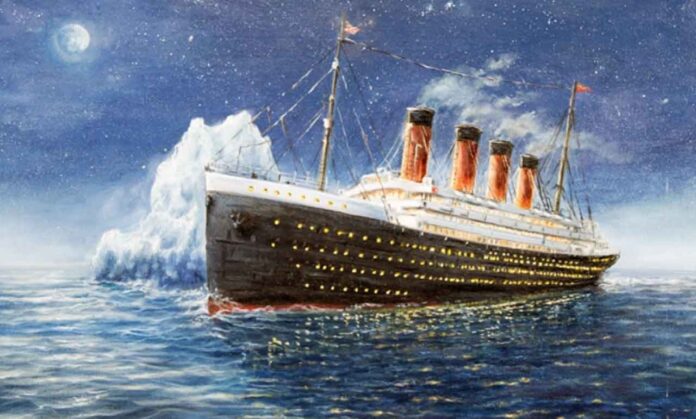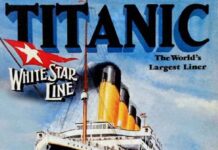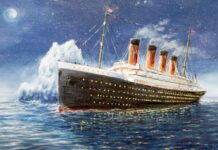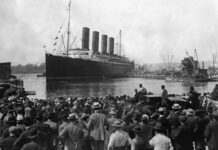Hundreds Feared Lost as Great Liner Founders in North Atlantic — First Eyewitness Accounts Tell of Heroism and Horror
ABOARD RMS CARPATHIA, April 15, 1912 (Filed at Sea via Wireless) — The RMS Titanic, the largest and most celebrated ocean liner ever to sail, is gone. She struck an iceberg shortly before midnight on Sunday, April 14, and foundered in the early hours of Monday morning, taking with her more than a thousand souls into the freezing blackness of the North Atlantic.
The Carpathia, under the command of Captain Arthur Rostron, arrived on the scene just before dawn and took aboard over 700 survivors, nearly all of whom escaped in lifeboats. The rest — hundreds more — are feared drowned or lost to the cold.
This correspondent was aboard Carpathia en route from New York to Fiume when the distress signals were received. What follows is the first account of what we found.
ICE, STARS, AND SILENCE
The captain of the Carpathis said “We reached the coordinates provided in the Titanic’s final wireless — 41.46° N, 50.14° W — at approximately 4:00 AM. The sea was littered with ice, some floes the size of tennis courts, and several towering icebergs, visible even in the dark under a clear and star-pocked sky”.
At first there was nothing. No ship. No smoke. Only silence and the groaning of the ice. Then, a voice — weak and hoarse — called from the dark. And then another.
A lifeboat appeared. And then another. Huddled forms, silent figures, wrapped in blankets and terror.
The Titanic’s survivors had spent the night adrift in open boats, exposed to sub-zero temperatures, many in evening clothes or nightdress. Some were barefoot. Some were unconscious. Some, still clutching infants, stared into the rising sun as if not yet certain they lived.
“SHE’S GONE — EVERY STANCHION OF HER”
One man, trembling and unable to stand, muttered simply: “She went down headfirst. Just slipped under like she was never there.”
Another, a young steward, gave a fuller account through chattering teeth:
“We struck something… ice… felt like a grinding. There was a tremor through the ship. The crew stayed steady. The order came to uncover the boats. The Captain said it was precautionary. But then we listed. Water started coming up fast.”
Passengers described the calm of many officers and the heroism of crew helping women and children into lifeboats even as the ship tilted steeply forward. Several mentioned the band, which reportedly played on the deck until the final moments.
“They played hymns,” said one woman, quietly. “Even as we were lowered, we heard the music.”
A NIGHT OF LOSSES, A DAWN OF GRIEF
Of the over 2,200 people aboard Titanic, Carpathia has rescued just over 700. Most of the survivors are women and children from First and Second Class, as well as a number of crew. Very few Third Class passengers made it into the boats.
Captain Edward J. Smith is reported lost. So too are Mr. John Jacob Astor, Mr. Isidor Straus, Mr. Benjamin Guggenheim, and Major Archibald Butt — though confirmation is ongoing. Several survivors report that these gentlemen remained aboard until the very end, refusing places in the lifeboats, helping others instead.
Mrs. Margaret Brown of Denver, wrapped in a woolen cloak and issuing quiet orders to other women, has been tireless in comforting the injured and organizing blankets, food, and tea aboard Carpathia.
She told me, simply: “I rowed. We all did. You forget who you are when the water’s coming. You just survive.”
WHAT REMAINS
There is no sign of the ship. No wreckage, save for a few floating deck chairs, pieces of wood, and the sorrowful flotsam of things left behind — a child’s shoe, a monogrammed life preserver, a woman’s parasol adrift.
As Carpathia turns back toward New York, the decks are silent. Survivors sit wrapped in blankets, watching the icebergs fade behind us. Some weep quietly. Most say nothing at all.
In the dining saloon, converted now to an infirmary, an elderly woman stares blankly ahead. When I asked her if she needed anything, she replied:
“I had a husband. I had a life. It’s all in the water now.”
A WORLD CHANGED
This is not just the story of a ship lost. It is the story of an era shaken. The Titanic was more than steel and steam — she was a floating city, a promise of progress, and a symbol of mankind’s triumph over the sea. Now she is a monument beneath the waves.
We sail now toward mourning families, empty docks, and headlines that will stretch across every front page in the world.
And somewhere behind us, beneath that cold and endless sea, lies a ship called Titanic — and the thousand souls who believed her invincible.








